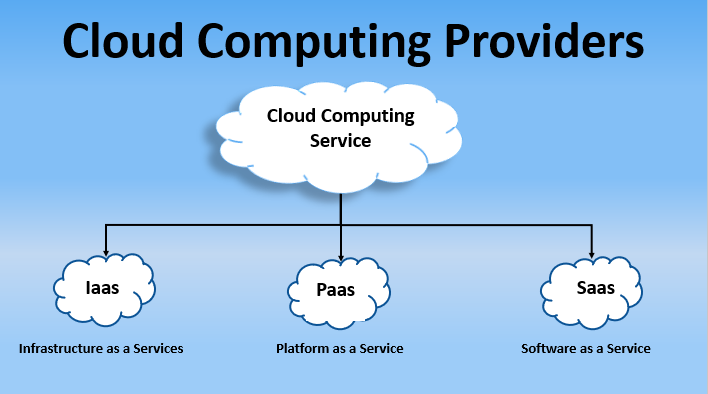LinkDaddy Cloud Services Press Release: Announcing New Characteristic and Enhancements
Wiki Article
Achieve Seamless Scalability With Cloud Services
In the ever-evolving landscape of cloud solutions, accomplishing smooth scalability stands as a keystone for contemporary businesses looking for to stay versatile and competitive. The pursuit for seamless scalability with cloud solutions unveils a globe of possibilities for those willing to welcome the transformative power of dynamic source monitoring.Advantages of Cloud Scalability
Cloud scalability supplies organizations the flexibility to dynamically readjust resources based on demand, ensuring ideal efficiency and expense efficiency. Furthermore, cloud scalability promotes advancement and trial and error by allowing businesses to easily examine new ideas and range them as needed. Ultimately, the advantages of cloud scalability extend past expense savings to include enhanced efficiency, agility, and innovation.Trick Attributes for Scaling
Efficient scaling in cloud solutions depends on key features that enable companies to adjust sources dynamically based on demand. One necessary feature for scaling is elasticity, enabling resources to scale up or down in feedback to varying workloads. This guarantees that companies can meet performance requirements without over-provisioning resources. Another key attribute is scalability, making it possible for systems to deal with raised workload by adding resources effortlessly. This attribute is important for accommodating growth without jeopardizing efficiency. In addition, automation plays an essential role in scaling by automating the provisioning and de-provisioning of sources based upon predefined policies. Automation lowers human treatment, boosts performance, and makes certain quick feedback to transforming demands. Surveillance and analytics tools are likewise essential for scaling, giving understandings right into source usage, performance metrics, and possible bottlenecks. These devices make it possible for companies to optimize and make informed decisions source allowance for effective scaling. In general, these essential functions jointly empower organizations to accomplish seamless scalability in cloud solutions.Implementing Auto-Scaling Strategies
To successfully enhance source allocation and adapt to differing workloads, companies must purposefully carry out auto-scaling strategies in their cloud solutions framework. Auto-scaling permits systems to immediately readjust the variety of calculate resources based on real-time need. There are various auto-scaling methods that organizations can use, such as predictive scaling, which makes use of historic information to forecast future resource needs, and reactive scaling, which reacts to present workload changes.
Ideal Practices for Scalability
For organizations aiming to enhance their scalability in cloud solutions, implementing best techniques is important for optimum performance and source administration. One key best practice is creating applications with a microservices style. This method breaks down applications into smaller sized, independent services that can be released, upgraded, and scaled individually, enabling better versatility and scalability.Another important practice is using containerization modern technology, such as Docker or Kubernetes. Containers make it possible for the product packaging of applications and their dependences into separated devices, making it less complicated to scale elements independently and deploy them continually across various atmospheres.
Furthermore, executing automated deployment and infrastructure as code (IaC) can simplify scalability efforts (linkdaddy cloud services). Automation tools like Terraform or Ansible help in provisioning and taking care of resources successfully, reducing manual errors and allowing rapid scalability
In addition, monitoring efficiency metrics, setting up notifies, and performing regular capacity preparation are necessary methods to ensure aggressive scalability administration. By adhering to these finest practices, organizations can accomplish smooth scalability in their cloud services while optimizing efficiency and resource usage.
Surveillance Performance Metrics
When evaluating the effectiveness of cloud solutions scalability, very closely monitoring efficiency metrics is moved here crucial for ensuring optimum capability and source appropriation. By continually tracking vital efficiency indications (KPIs) such as action times, latency, source, and throughput utilization, organizations can get beneficial understandings right into the wellness and performance of their cloud infrastructure. Checking efficiency metrics permits the very early detection of possible traffic jams or concerns that can impact scalability, enabling proactive measures to be required to address them before they rise.

Final Thought
In conclusion, attaining smooth scalability with cloud services is necessary for investigate this site companies to enhance performance, enhance innovation, and keep high efficiency degrees throughout peak times. By leveraging the benefits of cloud scalability, implementing auto-scaling methods, making use of key functions such as flexibility and automation, and following ideal techniques like application layout and performance tracking, services can efficiently scale their systems while making the most of resource use and performance.The mission for smooth scalability with cloud services reveals a globe of opportunities for those ready to accept the transformative power of dynamic source management.
Cloud scalability supplies companies the adaptability to dynamically adjust sources based on demand, making certain ideal performance and cost performance. An additional vital function is scalability, allowing systems to deal with boosted workload by adding resources seamlessly.For companies intending to improve their scalability in cloud solutions, executing ideal methods is crucial for ideal efficiency and resource monitoring.When evaluating the performance of cloud services scalability, very closely keeping track of performance metrics is critical for ensuring optimal performance and source allotment.
Report this wiki page